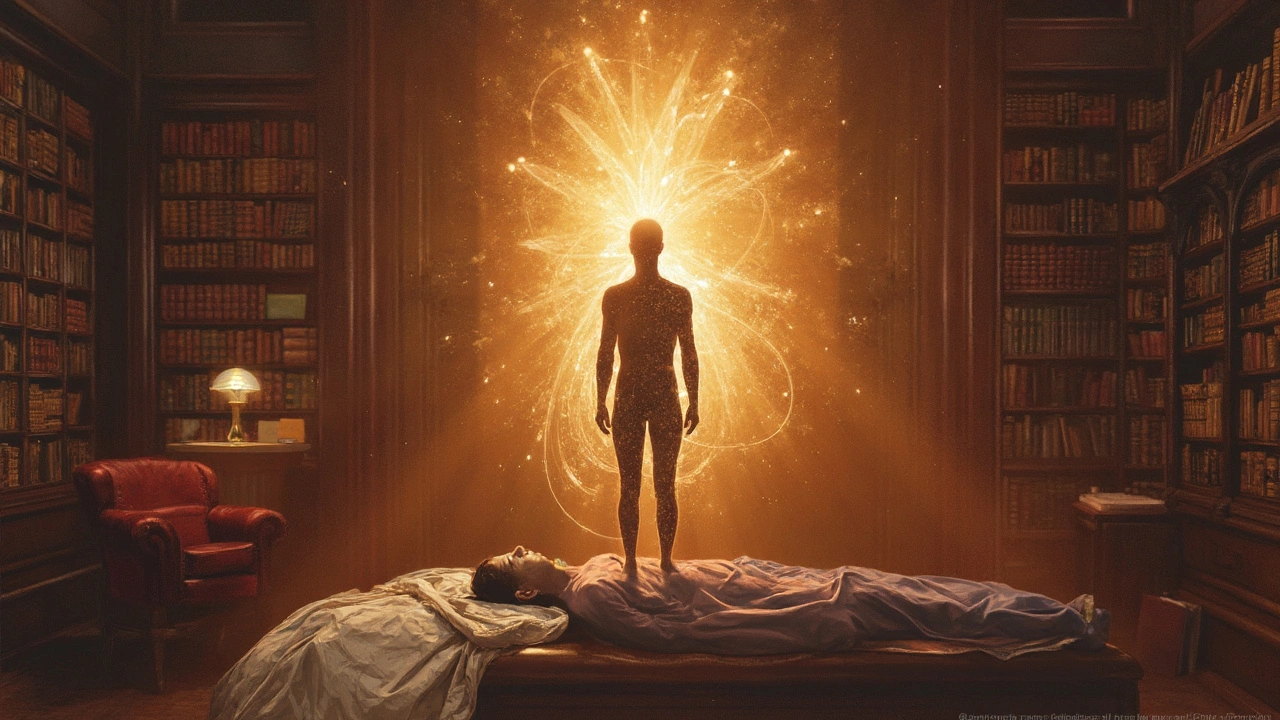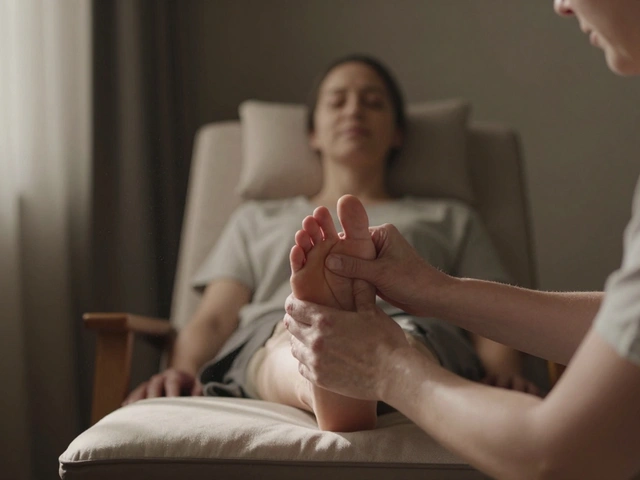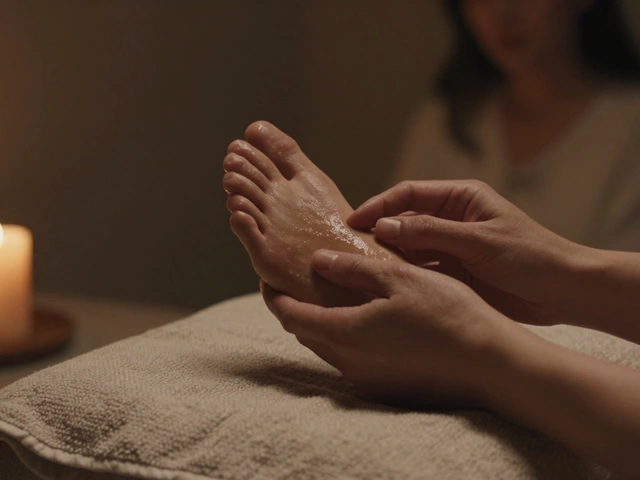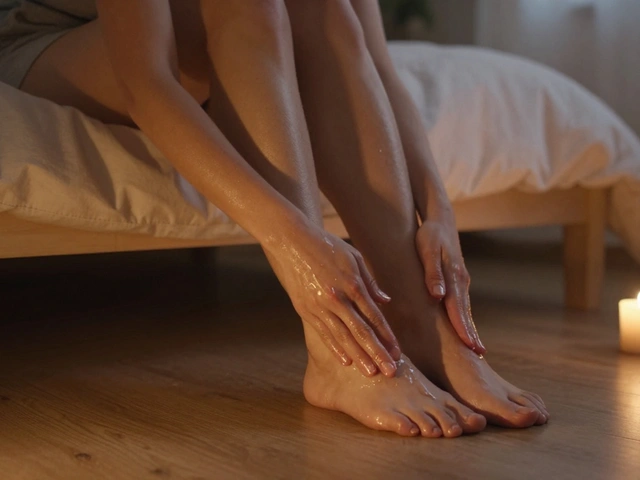Craniosacral therapy (CST) might sound a bit mysterious, but it's actually a down-to-earth way to bring balance back to your body. Picture this: a gentle touch that works its magic without the need for force or pressure. Sounds pretty great, right? This therapy taps into your body's natural rhythms to make you feel better overall.
So, what's the deal with craniosacral therapy? It involves a light touch, often no more than the weight of a coin, focused on your skull and spine. The idea is to help the body's own fluids flow smoothly, creating a relaxed, healthy state. It's like hitting the reset button without any heavy lifting.
But why should you care? Well, CST is said to help reduce tension and stress, which, let's face it, we all have a fair share of. Whether you're dealing with a nagging headache or just feeling off, this therapy's gentle approach might make a difference in how you feel. Plus, it's suitable for pretty much everyone, from newborns to the elderly. No age limits here!
- Understanding Craniosacral Therapy
- How It Works
- Benefits of Craniosacral Therapy
- What to Expect in a Session
- Who Can Benefit
- Tips for Choosing a Practitioner
Understanding Craniosacral Therapy
Craniosacral therapy is a holistic approach focusing on the craniosacral system, which consists of the membranes and fluid that surround and protect the brain and spinal cord. This gentle form of bodywork was developed in the 1970s by Dr. John Upledger, an osteopathic physician who believed in the healing power of our own body.
The main goal? To enhance the body's natural healing processes by encouraging the flow of cerebrospinal fluid. This fluid travels between the brain and the sacrum. Think of it as your body’s own soothing lubricant, helping everything work smoothly.
How It Developed
The journey of craniosacral therapy started with the understanding that by using a light touch, practitioners could release tensions deep in the body. Dr. Upledger found that even subtle imbalances in this system can lead to a variety of problems like stress, pain, and dysfunction.
Sessions usually occur on a massage table with clients fully clothed. The practitioner applies gentle pressure, mostly on the head, neck, and back, tuning in to the rhythm of your body and helping to release any blockages. Sound simple? That’s because it is, and that's part of the appeal.
Principles Behind the Therapy
- Rhythm Detection: The practitioner feels for the body’s natural rhythms. It’s like catching the pulse of a peaceful stream.
- Fluid Flow: Improving the movement of the cerebrospinal fluid throughout the central nervous system.
- Releasing Restrictions: Identifying areas of tightness or blockage and allowing them to release.
Scientific Insights
While research is still evolving, some studies suggest CST can contribute to reducing chronic pain and improving life quality. Although scientific support varies, anecdotal evidence from happy clients keeps the practice alive and thriving. Some practitioners make use of well-sourced studies that show potential benefits, and they're more than happy to share them if you’re curious.
How It Works
Let's break down craniosacral therapy into something easy to digest. So, what's happening during a session? The therapist uses a very light touch, mainly working on the skull, spine, and pelvis. This delicate contact helps identify areas where the craniosacral rhythm is out of whack.
Now, this rhythm is like the body's internal pulse, separate from your heartbeat but just as important. It's believed that when the rhythm flows smoothly, your body feels better overall. The whole process involves tapping into this rhythm and helping release blockages or restrictions.
Ever heard of the craniosacral system? It's made up of the membranes and fluid around your brain and spinal cord. By focusing on this system, the therapy aims to improve its function. When your craniosacral system is happy, it can potentially relieve pain and stress, give a boost to your natural healing processes, and support overall health.
Body Self-Correction
This is where the magic happens. CST works on the premise that the body can correct itself when given the right kind of support. The therapist's role is to guide the body into a relaxed state so it can start its own healing. It's sort of like giving your body a gentle nudge in the right direction.
Oh, and an important thing to note: the whole method is super adaptable and personalized. During therapy, the practitioner will adjust their approach based on what they feel is going on with your craniosacral rhythm and overall tension.
It's All About Relaxation
A big win with CST is that it encourages deep relaxation. So, besides working on physical issues, it’s also about creating a peaceful, balanced mind. Lower stress, less tension, a good night's sleep—these are some of the potential perks when your body's systems are in sync.
And for those of you who love the numbers, some experts in the field suggest that even a few sessions could enhance your feeling of physical and mental wellness. That means craniosacral therapy is not just about fixing things when they're broken—it's about making sure everything runs smoothly before issues even start.
Benefits of Craniosacral Therapy
If you've ever felt the weight of stress, headaches, or muscle tension tied you down, craniosacral therapy might just be your new best friend. Unlike some other therapies, CST takes a gentle approach, which might seem subtle at first but can have a significant impact on your overall health.
Stress Reduction
One of the standout perks of CST is its ability to ease stress. The gentle touch approach helps calm your nervous system, which many people find incredibly relaxing. Imagine turning down the volume on all that mental noise – pretty appealing, right?
Pain Management
Some folks swear by craniosacral therapy for managing chronic pain. By encouraging the body's natural healing, it can help with conditions like migraines, neck, and back pain. It's like giving your body a subtle nudge to realign and find comfort.
Boosting Immune System
While it may sound surprising, CST can actually bolster your immune system. How? By relieving stress and tension, the body is better equipped to fight off illnesses. Your body focuses less on stress and more on keeping you healthy.
Improving Sleep Quality
Struggling with getting a good night’s sleep? Craniosacral therapy could potentially improve your sleep patterns. By promoting relaxation and tension release, it might just lead you into a deeper and more restful slumber.
Enhancing Mental Clarity
Clearing away mental fog is another potential benefit. While CST won't suddenly make you a genius, the stress relief it offers can enhance mental clarity and focus, making daily tasks seem a bit less daunting.
Overall, craniosacral therapy is all about encouraging your body to heal itself by working in harmony with its natural processes. Whether you're aiming to reduce stress or manage pain, this therapy offers a gentle path to better well-being.

What to Expect in a Session
Walking into your first craniosacral therapy session might leave you a bit curious about what exactly will happen. The good news is that it's super chill and anything but intimidating.
Before you start, your practitioner might chat with you about your medical history and what brings you to craniosacral therapy. It’s a chance to share any specific issues you want to focus on. Communication is key here, so feel free to speak up!
During the Session
Once you're ready, you'll usually lie down fully clothed on a massage table. The therapist will begin with a light touch, often starting at your head, and work their way down your spine. The touch is so gentle you might hardly feel it. They’re looking to locate any imbalances in your craniosacral rhythm.
Here's what might surprise you: you could feel a bit of warmth, tingling, or even a deep sense of relaxation. Everyone’s experience is unique. Some people even fall asleep!
Session Duration
A typical CST session lasts between 45 minutes to an hour. It might feel longer or shorter, depending on your level of relaxation.
After Effects
Post-session, it's common to feel relaxed and possibly a bit lightheaded—don’t panic, it's normal. It's a good idea to take it easy and drink plenty of water. Your body is adjusting to the release of tension.
For the best outcomes, staying mindful of how you feel in the days following can give insights into how CST is helping you. Some folks feel immediate benefits, while for others, it might take a few sessions to notice significant changes.
Who Can Benefit
Wondering if craniosacral therapy is for you? You're not alone. This therapy is pretty versatile and can be a boon for many folks.
Everyday Stresses
Let's face it, life throws us curveballs all the time. If stress or tension is getting the better of you, CST might just give you the relief you need. Its gentle approach helps ease the nervous system back into balance, potentially giving you a fresh perspective on handling life's pressures.
Chronic Discomfort
Dealing with chronic issues like headaches or back pain? Craniosacral therapy’s light touch could help alleviate some of that discomfort. By targeting areas that are often associated with pain, CST can offer a soothing alternative to more intense treatments.
Special Situations
CST isn't just for adults feeling a bit stressed; it's great for all kinds of situations. From expectant mothers looking for some relaxation to babies who might be struggling with colic, craniosacral therapy adapts to fit different needs seamlessly.
Elderly and Everyone In Between
For older adults, this therapy can be gentle enough not to disturb yet effective enough to bring some relief. And since it's a no-force treatment, it's safe for just about everyone.
Here's a quick overview of potential beneficiaries:
- Individuals dealing with migraines
- People with sleep disturbances
- Adults seeking stress relief
- Elderly with mobility issues
- Infants dealing with early development challenges
So, if any of these sound like you, craniosacral therapy might just be worth exploring!
Tips for Choosing a Practitioner
Picking the right craniosacral therapy practitioner can make all the difference in your wellness journey. With so many options out there, it's crucial to find someone who knows their stuff and makes you feel comfortable.
Check Their Credentials
It's essential to verify that the practitioner is certified in craniosacral therapy. Look for someone who has completed training from a reputable institution. A little background research goes a long way in ensuring you're in capable hands.
Experience Matters
Experience can offer insights that aren't always found in textbooks. An experienced practitioner has likely encountered a variety of cases and knows how to adapt techniques to meet individual needs effectively.
Ask for Recommendations
Don't shy away from asking friends or your healthcare provider for recommendations. Personal testimonials can lead you to a capable therapist. Online reviews are also a helpful resource for gauging others' experiences.
Comfort and Communication
Feeling at ease with your practitioner is crucial. During a consultation, notice how they communicate. Are they listening to your concerns and explaining things in a way you can understand? Good communication is a cornerstone of effective therapy.
Consider Convenience
It might sound simple, but location and scheduling can impact your commitment to therapy. Make sure their office is conveniently located, and their hours fit with your schedule.
| Factor | Importance |
|---|---|
| Certification | High |
| Experience | High |
| Communication | Medium |
| Location | Low |
By considering these factors, you can ensure you find a practitioner who not only meets your needs but also supports your path to wellness with craniosacral therapy.








